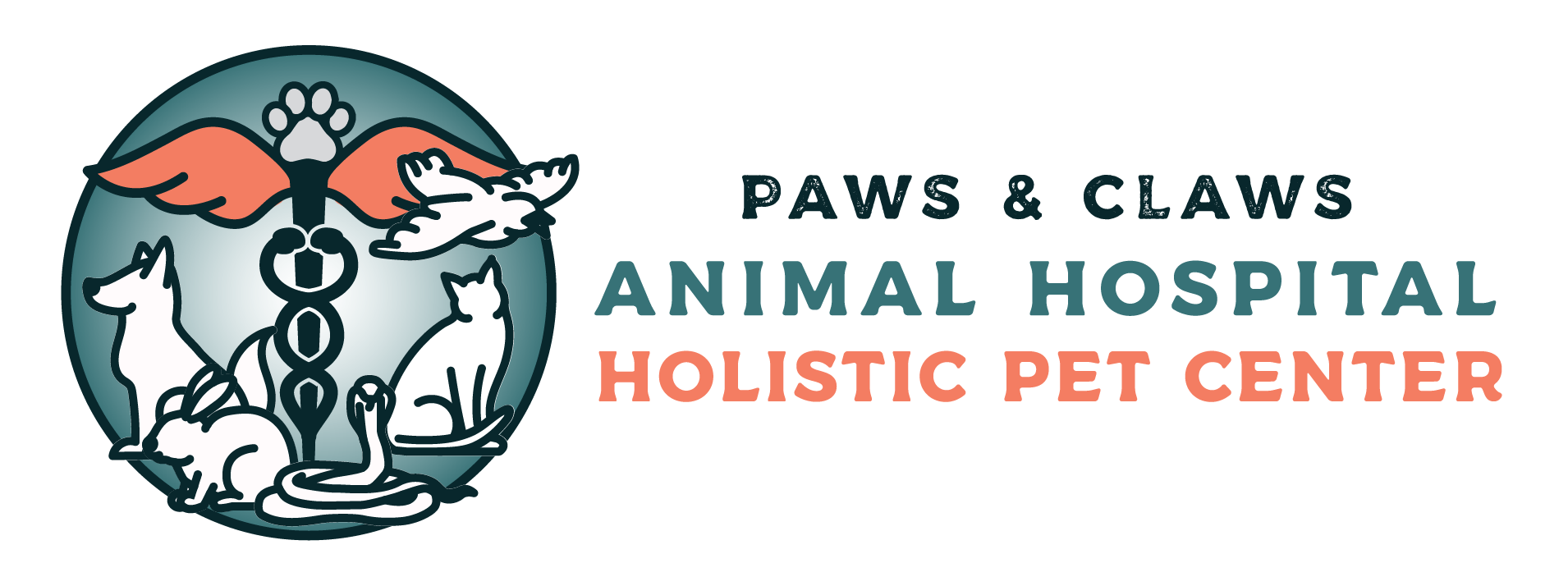If your older dog or cat seems stiff and sore at times, he’s far from alone. Osteoarthritis (arthritis) is an extremely common problem and becomes more prevalent as animals age, affecting at least 75% of the senior dog and cat population. While conventional doctors usually use drug therapy with NSAIDS to control the pain and inflammation that accompanies arthritis, a holistic approach relies on natural therapies to keep the animal comfortable and only resorts to NSAIDs on extremely painful days. This article will discuss what’s new in arthritis treatment, as well as revisit time-tested therapies to alleviate your companion’s pain and stiffness and give him back his mobility.
New Therapies
1. Hyaluronic Acid (HA)
HA is a normal constituent of joint fluid that lubricates the joints. Giving HA to arthritic animals is a natural way to encourage healing. It is so effective that I often use it when other joint supplements fail to work. HA reduces swelling at the site by decreasing white blood cell migration and infiltration into the affected tissue. It also inhibits the arachidonic acid pathway, resulting in decreased pain.
In my practice, I regularly use two commercially available HA products for dogs and cats. Both are made by MVP Laboratories: Cholodin Flex, a chewable treat that also contains choline to decrease the risk of cognitive disorder; and Chologel, a potent gel form I use for animals that don’t like the Cholodin Flex treat or that have more severe arthritis.
2. Cold Laser/Low-Level Laser Therapy
Laser therapy can be used to help animals with arthritis. Several proposed therapeutic mechanisms are involved. The most commonly accepted involves individual cells and light emission. Cells in the body emit and absorb light (biophotons) via chromophores (light-sensitive molecules in the cells). The light from the laser is absorbed by the chromophores and converted to chemical energy. These emissions and absorptions of light play key roles in regulating various cellular activities, including activation of cell division, cell-to-cell communication, and cell migration, all of which are essential in wound healing.
Optimal results occur when the laser light is of low intensity (meaning the tissue is not heated), only lasts for a short period of time, and pulses on and off rather than remaining static. Laser therapy offers several benefits, including increased cellular energy, reduced swelling, pain relief, muscle relaxation, and reduced inflammation. The exact nature of the healing depends on the condition being treated. For example, with musculoskeletal problems, healing results in a reduction of inflammation and pain. As is true with all-natural therapies, it’s important to understand that laser therapy is usually not the sole form of treatment. The ultimate goal is true healing, and anything that allows us to reach that goal should be used. In my practice, laser therapy is only one aspect of healing. It is combined with other therapies (herbs, homeopathic, nutritional supplements, etc.) to offer the best chance of healing.
While laser therapy can be used to assist animals with almost any medical condition, it is most commonly employed for those with diseases of the musculoskeletal system (sprains and strains, hip dysplasia, shoulder dysplasia, elbow dysplasia, cruciate ligament injuries, etc.) and the nervous system (disc disease, lumbosacral disease, and even epilepsy). The benefits of laser therapy for chronic arthritis are comparable to those obtained with non-steroidal anti-inflammatory drug therapy, without the side effects. My general protocol is to use a number of supplements to allow healing and use laser therapy several times a week for three to four weeks initially. I then use the laser as needed to maintain healing while the animal continues his supplement regimen. One word of caution: there are currently several laser manufacturers trying to enter the veterinary market. They make lasers that have not been thoroughly tested or approved by the FDA. Because laser therapy is considered an alternative treatment, I would recommend only having it done by a holistic veterinarian who has experience in a number of alternative therapies. After researching the various lasers available, I chose one made by Erchonia because of the large amount of research showing the benefits of using their particular product.
3. Stem Cell Therapy
This is another exciting new development that may help dogs with arthritis of the hips and knees. Stem cells are found throughout the body, especially in tissue fat, and have an amazing capacity to heal. Stem cell therapy involves collecting a small amount of fat from the animal, isolating and concentrating the stem cells contained in the fat, and injecting them into the animal’s joint. There, the stem cells help give the joint an extra boost of healing. (For more about stem cell therapy see the Feb/ Mar 2010 issue of Animal Wellness).
Stalwart Standbys
1. Joint Supplements
Most people are familiar with joint supplements, the most commonly prescribed natural therapies for animals with arthritis. While each product differs in the exact combination of ingredients, most generally contain glucosamine, chondroitin, and MSM. Various herbs (white willow bark, Boswellia) and nutrients (vitamin C) may also be included in proprietary formulas. The ingredients are designed to reduce pain and inflammation and encourage cartilage healing.
2. Chiropractic
Chiropractic medicine uses spinal manipulation to improve health. It focuses on the interactions between the nervous system and the biomechanics of the vertebrae. In chiropractic theory, disease results from a spinal misalignment that negatively influences the nervous system. Chiropractic therapy seeks to realign the spine through a variety of manipulative techniques. Only veterinarians, or chiropractors using the technique under direct veterinary supervision, should perform chiropractic therapy on dogs and cats.
3. Homeopathy/Homotoxicology
These therapies use diluted substances (typically herbal or mineral) to encourage the body to respond to disease. In the case of animals with arthritis, homeopathics such as Arnica or Hypericum, or Zeel or Traumeel (homotoxicology remedies made by the Heel Corporation) encourage the body to remove inflammation and decrease pain.
4. Acupuncture
Acupuncture is a well-known and popular therapy for relieving pain and inflammation in arthritic animals. It can be done with needles, liquids injected into acupuncture points (aquapuncture), or with cold laser therapy directed at the points. You can also be taught acupressure to achieve ongoing results at home.
5. Magnets
The cells in the body have a normal magnetic field that allows for proper functioning. This means magnets used in a therapeutic way can assist in healing. They can either be permanent magnets, also called static magnets, or pulsed electromagnetic field magnets (PEMF). Magnets heal by removing inflammation and restoring circulation. (In the Eastern view of healing, magnets help restore the body’s energy flow to allow healing and proper metabolism.) By increasing blood flow to a diseased site, increased nutrients are available for healing.
What About Medications?
Conventional drugs such as NSAIDs can be used as part of an integrative approach for the treatment of arthritis. The best and most holistic way to use NSAIDs is to combine them with other therapies (joint supplements, homeopathics, laser therapy, etc.) so the lowest dose possible is administered. By using several integrative therapies, I find most of my patients only need about half the label dose of an NSAID, given only on particularly painful days. The secret to successful arthritis therapy is to start an integrative treatment program at the first sign of discomfort or when any normalities are seen on radiographs (x-rays.) Doing so can help ensure a long, pain-free life, with minimal need for NSAIDs or other medications.

